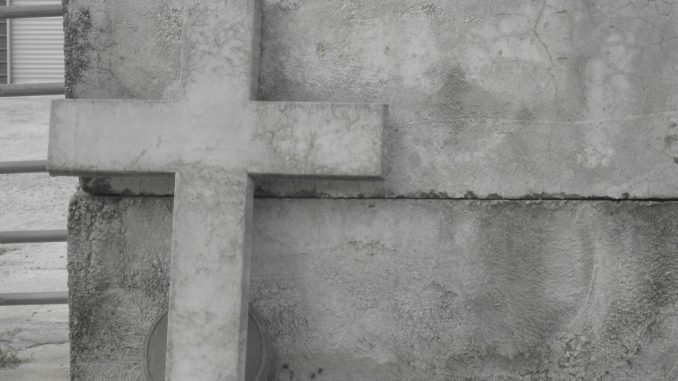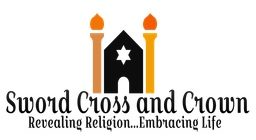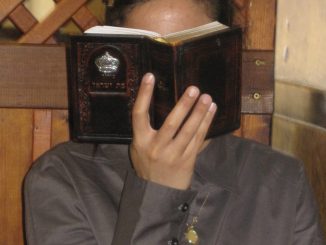
He was anointed unto death so He could redeem us unto life…
As a wanted Man, Jesus came to Bethany six days before the Passover. He came to spend time with Mary, Martha, and the recently risen Lazarus. John’s gospel records – “There they made Him a supper; and Martha served, but Lazarus was one of those who sat at the table with Him. Then Mary took a pound of very costly oil of spikenard, anointed the feet of Jesus, and wiped His feet with her hair. And the house was filled with the fragrance of the oil.” (John 12: 2-3) From the gospel accounts of Matthew and Mark, it is recorded that the meal took place in Simon the Leper’s house. Matthew records that before the meal took place, Jesus told His disciples – “’You know that after two days is the Passover, and the Son of Man will be delivered up to be crucified.’” (Matt. 26: 2) Jesus had come to fulfill the old covenant and to establish the new covenant.
Mary may have heard what Jesus told His disciples about His approaching crucifixion. As a generous token of her love and devotion to Jesus, she openly and intentionally anointed Him with a pound of very expensive oil of spikenard. She spared no expense in expressing her dedication to Jesus. However, her act brought reproof rather than praise from the disciples. John records – “But one of His disciples, Judas Iscariot, Simon’s son, who would betray Him, said, ‘why was this fragrant oil not sold for three hundred denarii and given to the poor?’” (John 12: 4-5) Matthew and Mark record that some of the disciples were indignant towards her and criticized her sharply. (Matt. 26: 8; Mark 14: 4-5) Judas did not care for the poor. John records that Judas was a thief. He was the keeper of the money box, and would steal what was put into it. (John 12: 6)
In support and understanding of Mary’s act of anointing, Jesus said to His disciples – “’Let her alone; she has kept this for the day of My burial. For the poor you have with you always, but Me you do not always have.’” (John 12: 7-8) Matthew records that Jesus said – “’Why do you trouble the woman? For she has done a good work for Me. For you have the poor with you always, but Me you do not have always. For in pouring this fragrant oil on My body, she did it for My burial.’” (Matt. 26: 10-12) Mark records that Jesus said – “’Let her alone. Why do you trouble her? She has done a good work for Me. For you have the poor with you always, and whenever you wish you may do them good; but Me you do not have always. She has done what she could. She has come beforehand to anoint My body for burial.’” (Mark 14: 6-8)
We find when studying Exodus, that God gave very specific instructions regarding the tabernacle, the implements found in it, and the priests who served in it. In Exodus 28: 41 we read that Aaron and his sons were anointed, consecrated, and sanctified before they ministered before God in His tabernacle as priests. These priests served in a physical tabernacle. They served in fallen bodies, subject to death. Jesus came as God in flesh. Hebrews teaches – “But Christ came as High Priest of the good things to come, with the greater and more perfect tabernacle not made with hands, that is, not of this creation.” (Heb. 9: 11) Jesus Christ held a priesthood that no other man could hold – “For it is evident that our Lord arose from Judah, of which tribe Moses spoke nothing concerning priesthood. And it is yet far more evident if, in the likeness of Melchizedek, there arises another priest who has come, not according to the law of a fleshly commandment, but according to the power of an endless life.” (Heb. 7: 14-16)
Mary anointed Jesus for His burial. He had come to give His life to establish a new covenant. “But now He has obtained a more excellent ministry, inasmuch as He is also Mediator of a better covenant, which was established on better promises.” (Heb. 8: 6) The old covenant, or Old Testament, was conditional. The new covenant is unconditional. Jesus had to die and spill His blood in order to establish the new covenant. Jesus took away the old covenant in order to establish the new covenant. “then He said, ‘Behold, I have come to do Your will, O God.’ He takes away the first that He may establish the second. By that will we have been sanctified through the offering of the body of Jesus Christ once for all.” (Heb. 10: 9-10) Year after year under the old testament or covenant, the Jews had to sacrifice animals so that their sins would be covered. “And you shall offer a bull every day as a sin offering for atonement. You shall cleanse the altar when you make atonement for it, and you shall anoint it to sanctify it.” (Ex. 29: 36) Hebrews in the New Testament teaches – “But this Man, after He had offered one sacrifice for sins forever, sat down at the right hand of God, from that time waiting till His enemies are made His footstool. For by one offering He has perfected forever those who are being sanctified. But the Holy Spirit also witnesses to us; for after He had said before, ‘This is the covenant that I will make with them after those days, says the Lord: I will put My laws into their hearts, and in their minds I will write them,’ then He adds, ‘Their sins and their lawless deeds I will remember no more.’ Now where there is remission of these, there is no longer an offering for sin.” (Heb. 10: 12-18)
The flagship LDS university is named after one of it’s most revered prophets, Brigham Young. Would that the Mormon organization once and for all come clean of it’s association with this infamous man! He taught the principle of blood atonement; that some sins such as apostasy, murder, or adultery were so heinous that only by shedding the sinner’s blood would the sin be cleansed. The Mormon church has evidence of Brigham Young’s involvement with the Mountain Meadows Massacre, the 1857 September 11th slaughter of 120 Arkansas pioneers passing through the Utah territory. It intentionally withheld this evidence from the historian Juanita Brooks as she was researching this event. David O. McKay and J. Reuben Clark withheld affidavits of eyewitness accounts of the massacre after reviewing them. (Burningham 162) The LDS president, Wilford Woodruff accompanied Young to the site of the massacre in 1861. There they found a pile of stones about 12 feet high, along with a wooden cross which read “Vengeance is mine and I will repay saith the Lord.” Brigham Young tellingly stated that the cross should have read “Vengeance is mine and I have taken a little.” Without saying anything else, Young raised his arm to the square, and in five minutes there was not one stone left upon another. His minions did his bidding and destroyed the monument. (164-165) How fraudulent of LDS leadership to suppress the truth about Brigham Young.
No man’s blood can atone for sin. Only the blood of Jesus Christ does so. The Mormon church would be wise to once and for all admit the entire truth about their sordid history; especially the crimes and depravity of both Joseph Smith and Brigham Young.
Resources:
Burningham, Kay. An American Fraud – One Lawyer’s Case Against Mormonism. Texas: Amica Veritatis, 2010.



